NASA’s Curiosity Mars rover has caught the first image of asteroids taken from the surface of Mars on April 20, 2014. The image includes two asteroids, Ceres and Vesta. This version includes Mars’ moon Deimos in a circular, exposure-adjusted inset and square insets at left from other observations the same night. Credit: NASA/JPL-Caltech/MSSS/Texas A&M
More night sky views and surface mosaics below[/caption]
The Curiosity rover has captured the first images of asteroids even taken by a Human probe from the alien surface of the Red Planet during night sky imaging.
And it’s not just one asteroid, but two asteroids caught in the same night time pointing on the Red Planet. Namely, asteroids Ceres and Vesta.
The stupendous image – seen above – was snapped by Curiosity’s high resolution Mastcam camera earlier this week on Sunday, April 20, 2014, Sol 606, whilst she was scanning about during daylight for her next drilling target at “The Kimberley” waypoint she pulled into at the start of this month.
Ceres and Vesta appear as streaks since the Mastcam image was taken as a 12 second time exposure.
“This imaging was part of an experiment checking the opacity of the atmosphere at night in Curiosity’s location on Mars, where water-ice clouds and hazes develop during this season,” said camera team member Mark Lemmon of Texas A&M University, College Station, in a statement.
“The two Martian moons were the main targets that night, but we chose a time when one of the moons was near Ceres and Vesta in the sky.”
View our “Kimberley” region photo mosiacs below to see exactly from where the six wheeled robot took the asteroid image shown above, while driving around the base of “Mount Remarkable”.
And those two asteroids are extra special because not only are they the two most massive objects in the Main asteroid belt between Mars and Jupiter, but they are also the destinations of another superlative NASA unmanned mission – Dawn.
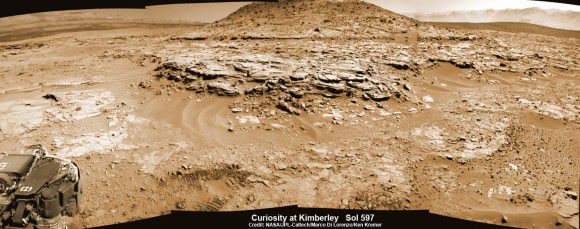
The exotic Dawn probe, propelled by a stream of ions, orbited Vesta for a year in 2011 and is now approaching Ceres for an exciting orbital mission in 2015.
Ceres, the largest asteroid, is about 590 miles (950 kilometers) in diameter. Vesta is the third-largest object in the main belt and measures about 350 miles (563 kilometers) wide.
And as if Curiosity’s mouthwatering and heavenly double asteroid gaze wasn’t already spectacular enough, the tinier of Mars’ moons, Deimos, was also caught in that same image.
A trio of star trails is also seen, again due to the 12 second time exposure time.
Furthermore, Mars largest moon Phobos as well as massive planets Jupiter and Saturn were also visible that same Martian evening, albeit in a different pointing.
These celestial objects are all combined in the composite image above.
“The background is detector noise, limiting what we can see to magnitude 6 or 7, much like normal human eyesight. The two asteroids and three stars would be visible to someone of normal eyesight standing on Mars. Specks are effects of cosmic rays striking the camera’s light detector,” says NASA.
An unannotated image is seen below.
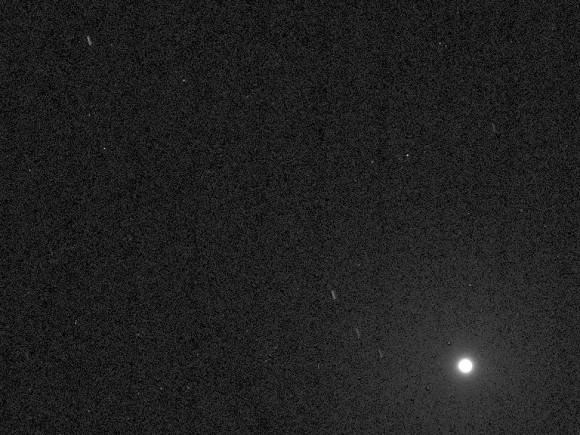
Curiosity’s makers back on Earth are nowhere to be seen. But check out the Curiosity’s earlier photo below of the Earth and Moon from my prior article – here.
To date, Curiosity’s odometer totals 3.8 miles (6.1 kilometers) since landing inside Gale Crater on Mars in August 2012. She has taken over 143,000 images.
The sedimentary foothills of Mount Sharp, which reaches 3.4 miles (5.5 km) into the Martian sky, is the 1 ton robots ultimate destination inside Gale Crater because it holds caches of water altered minerals. Such minerals could possibly indicate locations that sustained potential Martian life forms, past or present, if they ever existed.
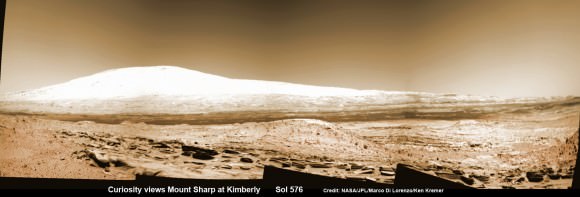
Curiosity has some 4 kilometers to go to reach the base of Mount Sharp sometime later this year.
Stay tuned here for Ken’s continuing Curiosity, Opportunity, Chang’e-3, SpaceX, Orbital Sciences, LADEE, MAVEN, MOM, Mars and more planetary and human spaceflight news.
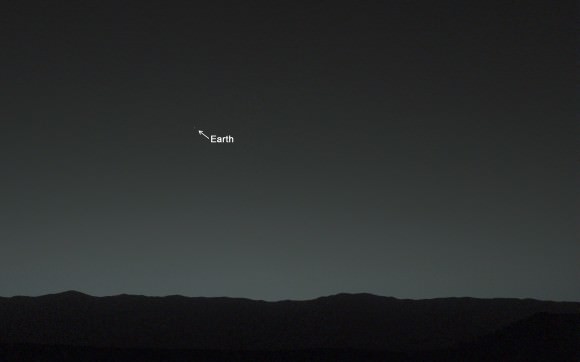
This evening-sky view taken by NASA’s Mars rover Curiosity shows the Earth and Earth’s moon as seen on Jan. 31, 2014, or Sol 529 shortly after sunset at the Dingo Gap inside Gale Crater. Credit: NASA/JPL-Caltech/MSSS/TAMU
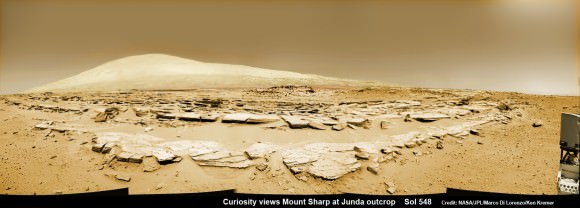

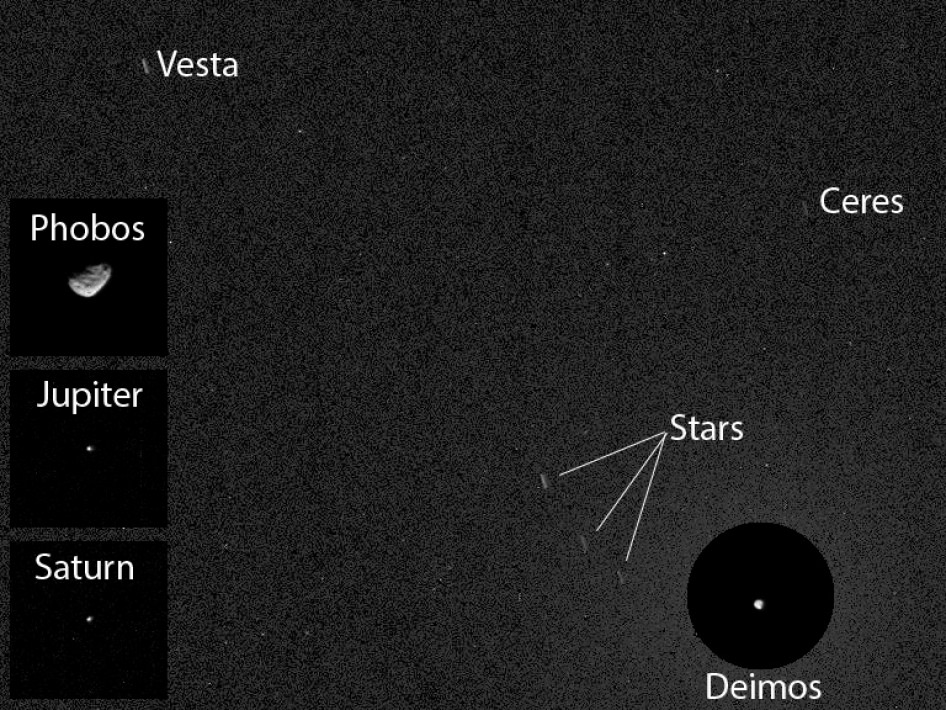
Seeing asteroids from Mars is neat, but something else caught my eye.
Phobos is not round. We knew that, but imagine: Imagine if our moon were small and non-spherical. What impact might that have had on the history of astronomy? Would it have changed the outlook of the early philosophers? How much longer would it have taken to realize the true order and arrangement of the universe as we understand it today?